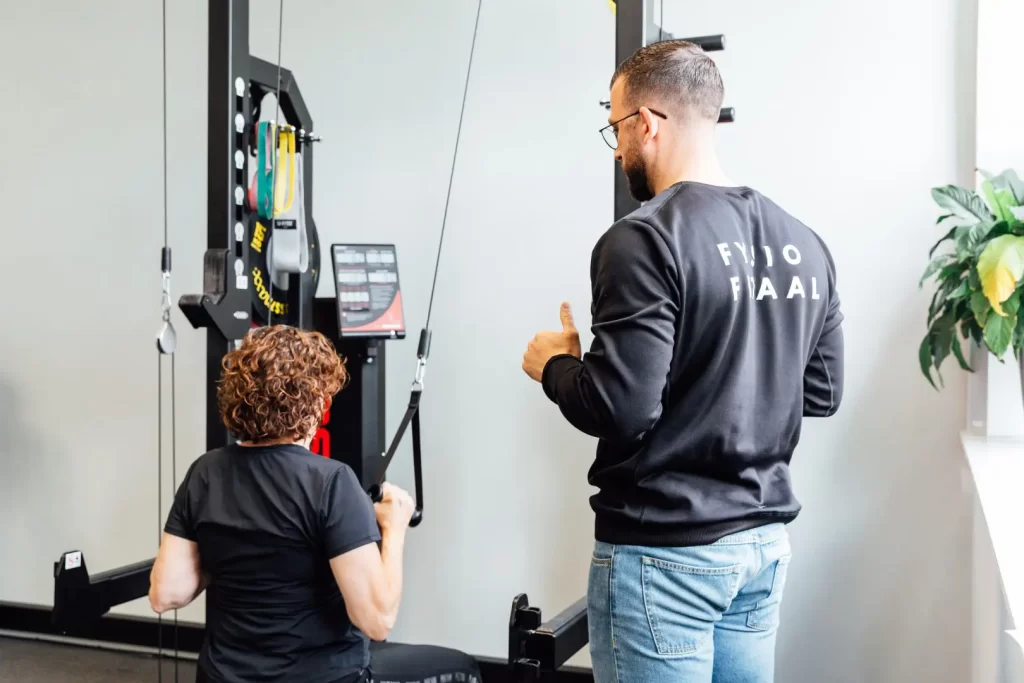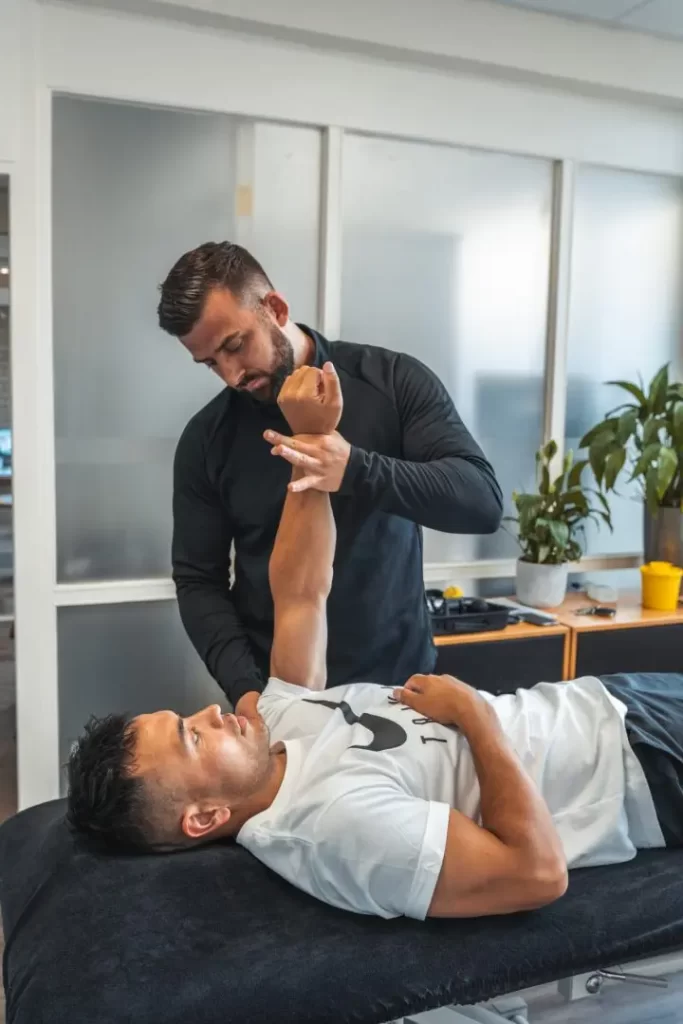Headache complaints
Headaches come in different forms. The most well-known form of headache is migraine this form is episodic and often on one side of the head. Physiotherapy is useful for certain forms of headache. The forms of headache where physiotherapy can make a difference are Muscular tension headache and Cervicogenic headache (headache from the neck). There are many similarities in the symptoms in the different types of headaches. Therefore, extensive examination is needed to reach a correct conclusion for the final treatment plan.

Cause
Cause
Common Headache complaints

Cervicogenic headache
Cervicogenic headache is often not constant but comes on in fits and starts

Tension headache
Tension type headache also known as tension headache is the most common form of headache.
Headache risk factors
Headache risk factors
- Stress and tension
- Lack of physical activity
- Physical tension or frequently the same posture

Grades
Grades
Here, we look at how long a complaint has been present.
- Acute (<6 weeks) → Direct or recent injury, often due to trauma or overuse.
- Subacute (6-12 weeks) → Recovery process is ongoing, but there may still be some pain and movement restriction.
- Chronic (>12 weeks) → Long-term complaint possibly influenced by multiple factors such as posture, compensation patterns or psychosocial stress.
The different headache symptoms
First of all, a distinction is often made between primary and secondary headache forms.
Primary headache
We talk about primary headache when the headache is not a symptom but the condition itself. Migraine or cluster headache are examples of primary headache forms.
Secondary headaches
In secondary headaches, the headache is often a symptom of another complaint. This is the case with:
Tension headache: With this type of headache, it feels as if there is a tight band around the head. This pain lasts for up to 14 days and subsides somewhat when relaxing.
Cervicogenic headache: This form results from tension in the neck. Pain gets worse when the neck is moved, decreases when the neck is moved less. Pain starts at the back of the head and pulls forward, usually on one side of the head. The pain does not change sides. Often, this pain occurs during a period of stress or after working long hours at a computer.
Tension headache and cervicogenic headache are both examples of secondary headache. Medication-dependent headaches may also be present. This is a form of headache symptoms that arises as a result of excessive use of medication in the form of paracetamol or triptans. Fluctuations in caffeine intake often in the form of coffee can possibly also be a source of headache.
How do you make underpinnings?
To see which form of headache a person has, a distinction can be made based on its location. Different forms of headache give a different radiating area of pain. The way the symptoms arise and the duration of the symptoms also give an indication of which type of headache it could possibly be. Therefore, the client's story is very important in headache complaints
Anatomy
Anatomy
The cervical vertebrae (C1-C7) form the cervical spine and play an important role in movement, stability and nerve conduction. Problems in this area can lead to neck pain, headache and radiating pain to shoulders or arms.
Key structures in neck pain
- Upper cervical vertebrae (C0-C2) → Involved in headache complaints, such as cervicogenic headache. The atlas (C1) and axis (C2) control rotation and stability.
- Lower cervical vertebrae (C3-C7) → More taxed at posture-related complaints, such as stiff muscles, osteoarthritis or neck hernias.
- Intervertebral discs → Lie between the vertebrae and absorb shock. Wear and tear can lead to hernias or neck osteoarthritis.
- Nerves → Exiting nerves from the cervical vertebrae send signals to the shoulders, arms and hands. Entrapment can radiating pain, tingling or loss of strength cause.
- Muscles → Overloading the trapezius, sternocleidomastoid and deep neck flexors may lead to tension headaches and neck pain.
- Blood vessels → The vertebral artery runs through the cervical vertebrae and supplies blood to the brain. Irritation can cause dizziness.
Symptoms of muscle tension headaches
- Moderate nagging pain
- Usually on both sides of the head
- A band feeling to the front of the head

Symptoms of cervicogenic headache
- Headache is on one side
- Possible complaints to the shoulder
- Often in combination with other forms of headaches
Treating headaches
Treatment of headache symptoms will be adapted to what form it is. The approach is often different and requires a different perspective.
Treatment of headache symptoms will be adapted to what form it is. The approach is often different and requires a different perspective.
For the other types of headaches, a collaboration with the hospital or GP may be possible.
Tension headache
With tension headaches, there is a focus on relaxing, therapy often consists of relaxation massage and moderate-intensity exercise this for example by walking and gentle exercise, often these headaches then go away.
Cervicogenic headache
Because this headache form originates in the neck, this treatment consists of mobilising the neck, massage of the neck and light training of the small neck muscles. Posture advice is also part of this therapy.
Physical tests for headache complaints
There are a number of tests described to understand possible factors contributing to headache symptoms.
Flexion rotation test
Flexion rotation test
Craniocervical flexion test(CCFT)
Craniocervical flexion test(CCFT)
Making an appointment at FysioFitaal
We work from multiple locations in Tilburg, always close by for professional and accessible physiotherapy. Fill in the contact form and we will contact you soon. Together, we will work on your recovery!

